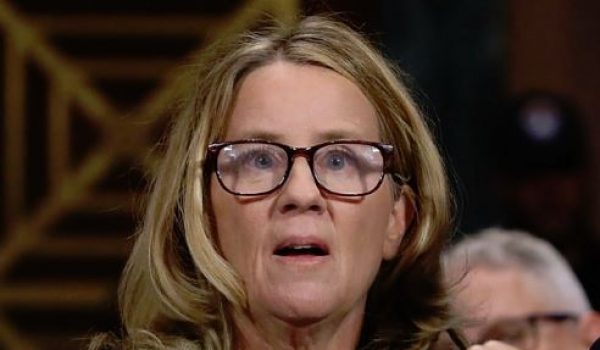
Many studies show harsh penalties deter crime. For example, several studies concluded that the death penalty saves lives by deterring murder. As the Associated Press noted in 2007, “Each execution deters an average of 18 murders, according to a 2003 nationwide study by professors at Emory University. (Other studies have estimated the deterred murders per execution at three, five and 14).”
Similarly, the National Bureau of Economic Research has a web page titled “Sentence Enhancements Reduce Crime.” It discusses how California’s Proposition 8 reduced crime by keeping “repeat offenders” off of the streets. By increasing penalties, it “helped to reduce crime,” according to a study. “Because convicted criminals were serving longer sentences, years after the law’s change they were still locked up, rather than out on the streets committing crime.”
Although such studies are well-known and not hard to find, Professor John Pfaff seemingly denies that they exist. Pfaff poses the question, “How many studies show that severe sanctions are an effective way to deter crime?” He answers his own question, “None.” But there are many such studies.
Geographic comparisons also show that longer prison sentences reduce rates of violent crime and property crime, as studies of neighboring jurisdictions show. As I noted in 2016:
Longer sentences save lives by deterring crime, as comparisons of neighboring states with different crime rates but similar economic or other characteristics illustrate. For example, Virginia has a much lower crime and murder rate than neighboring Maryland, which has a more permissive attitude towards crime and punishment. Virginia’s Fairfax County has a much lower crime rate than demographically similar, and similarly wealthy, neighboring Montgomery County, Maryland, despite having had a similar violent crime rate as recently as 1978, when criminal penalties were more similar between Maryland and Virginia. Today, prison sentences are much longer in Virginia, and parole is largely banned in Virginia. In 2012, Maryland was among the top ten most dangerous states, with a gun-related homicide rate of 6.4 per 100,000, according to the Justice Department. In 2007-2010, Maryland’s gun-related homicide rate was 5.53 per 100,000 versus 3.16 per 100,000 in Virginia.
Similarly, the Washington Examiner reported on a study comparing crime rates in these two similar areas governed by different criminal laws. They ended up with very different rates of violent crime:
Montgomery and Fairfax counties are similar in size, population and demographics, but the Maryland county has seen nearly 25 percent more serious crime recently than its neighbor across the Potomac, a study found. … The rate of violent crimes in Montgomery is 235 per 100,000 residents, in Fairfax it’s 78 per 100,000 residents.
Pfaff writes a lot about the cost of incarceration. But his concern about costs seems like a red herring, because all of America’s prisons cost a tiny fraction of things that Pfaff supports, such as government healthcare entitlements. Prisons more than pay for themselves, economically. If not imprisoned, a career criminal can inflict hundreds of thousands of dollars of economic harm, annually, far more than the cost of jailing that criminal. In a 1998 study in the Journal of Quantitative Criminology, Mark Cohen of Vanderbilt University estimated that there were “$165,000 in victim costs per year of a criminal’s career” for a typical “career criminal,” including “lost wages and medical bills” and “lost quality of life to victims.”
Pfaff is an avid supporter of Obamacare, which greatly expanded the scale of government spending and regulation in America’s healthcare sector, which amounts to almost one-fifth of the nation’s economy. It also shrank the size of the U.S. economy. In Fall 2016, Pfaff posted a series of tweets praising Obamacare, although only a few of them pop up when I search Twitter.
Preventing crime is the most basic function of government. That includes prisons: It does no good to arrest criminals if they are just released to commit more crimes, rather than being imprisoned. Even libertarians who support leaving most functions to the free market admit that the government is necessarily involved in punishing violent crimes and property crimes. Jail is necessary both to deter crime, and because most criminals lack the money to compensate their victims, making full restitution impossible. (Indeed, criminals often can’t even afford to pay small fines and court costs. That inability often leads to them being stripped of their driver’s licenses as a result — even though losing their driver’s license leaves them even less able to work and pay off their fines and court costs. More than 627,000 people lost their driver’s license in Virginia alone for failure to pay court fines and costs.).
By contrast, healthcare is not an inherently governmental function at all, and can be provided by the free market. Prior to the passage of Medicare and Medicaid in the 1960s, there was little government involvement in healthcare in the U.S. This did not prevent the vast majority of the population from obtaining medical care. Indeed, life expectancy had risen enormously over the past century.
Similarly, Obamacare greatly expanded the government’s role in America’s healthcare system, but it did nothing to improve life expectancy.
After Obamacare went fully into effect in 2014, life expectancy actually fell, after it had been rising for many years. Government healthcare entitlements do not improve the average person’s life span, although they can sometimes provide financial security for people who otherwise would have to deplete their own resources or those of their relatives paying for healthcare.
Obamacare is actually likely to reduce the average America’s lifespan somewhat over the long run, by slowing the rate of medical innovation. That is what the dean of Harvard Medical School predicted in 2009, and two doctors argued in the Wall Street Journal in 2013.
Pfaff’s book “Locked In” complains about how people who committed violent crimes are kept locked in prison for long periods of time. For example, he thinks sentences should be reduced for murderers. But keeping criminals locked in jail keeps them from committing more crimes, by preventing them from roaming free in society at large, where they can kill, rob, or rape again. Violent criminals being locked in jail is a good thing, not a bad thing.



